
etecube® | System for Education Training Exercise Experimentation Evaluation
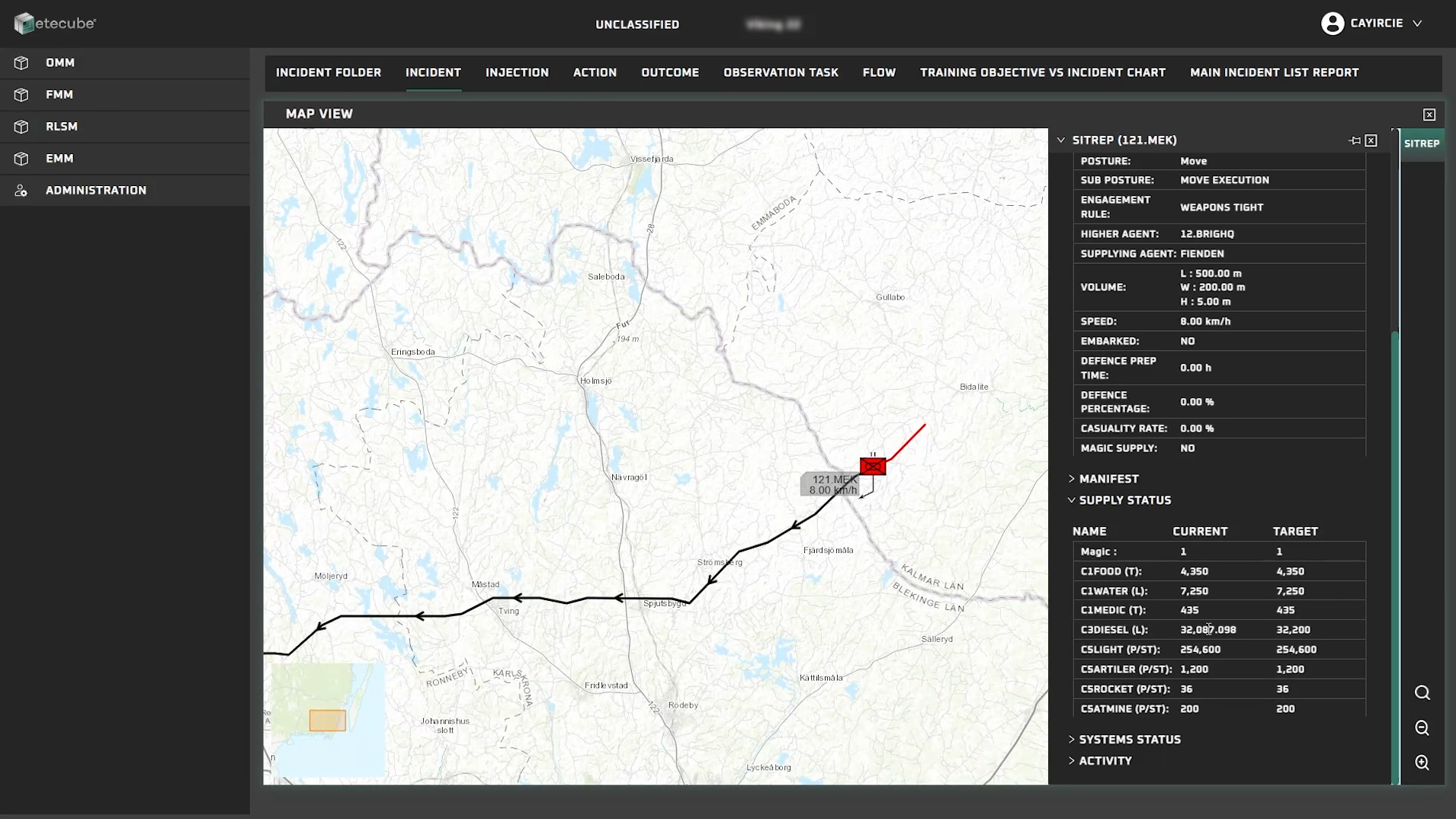
etecube® is a toolset for planning and managing education training exercise experimentation and evaluation (etecube®) activities. It consists of the following modules:
- Objective Management Module (OMM) is for analyzing scenario and main incident list conditions, key processes and targeted key functional areas for each training and experimentation objective.
- Setting/Scenario Management Module (SMM) provides a collaborative environment for developing and managing settings and scenarios.
- Flow Management Module (FMM) is used by main incident list (MIL) developers for creating MIL and managing it dynamically to steer an exercise process towards the exercise and training objectives.
- Experiment Management Module (EMM) is for designing experiments according to the experimentation objectives, collecting data during experimentations and reporting results.
- Lessons Identified and Lessons Learned Module (LILL) records observations and appropriations, and supports LILL analysts to verify, manage and validate lessons.
- Real Life Support Module (RLSM) is for managing configuration change requests and trouble tickets.
etecube® is an integrated part of hybrid multidomain operations tactics and strategy simulator (hymots®). Please visit www.hymots.info for further information about hymots®. Incidents in etecube® can be related to the agents and commands in hymots®, hence a real time visualization of incidents and an automatic feed back to the objective management module are enabled. Similarly, a simulation command in hymots® can be related to an incident in nginr®. Alternatively, customers can procure and use etecube® also independently from hymots®.
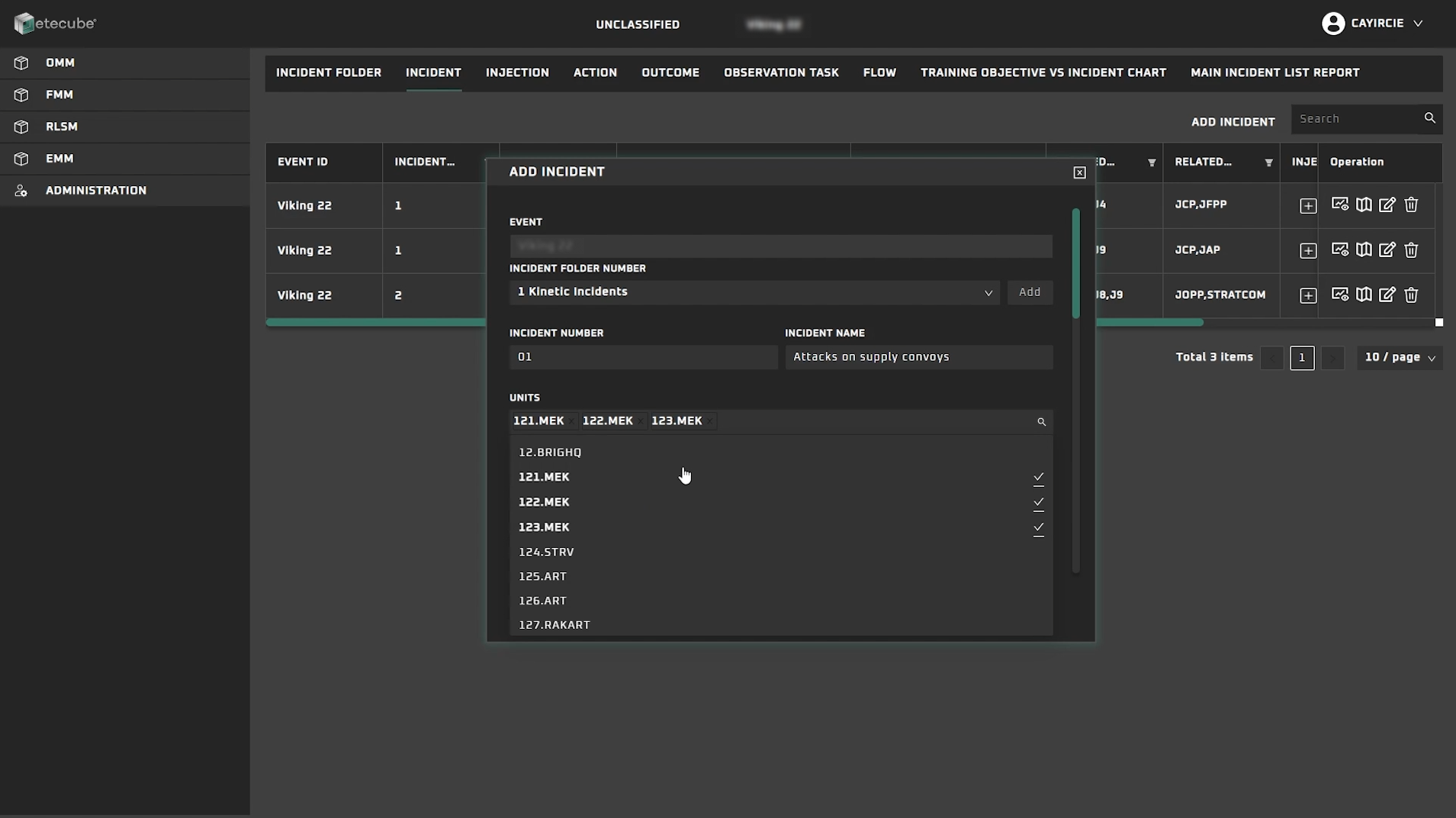

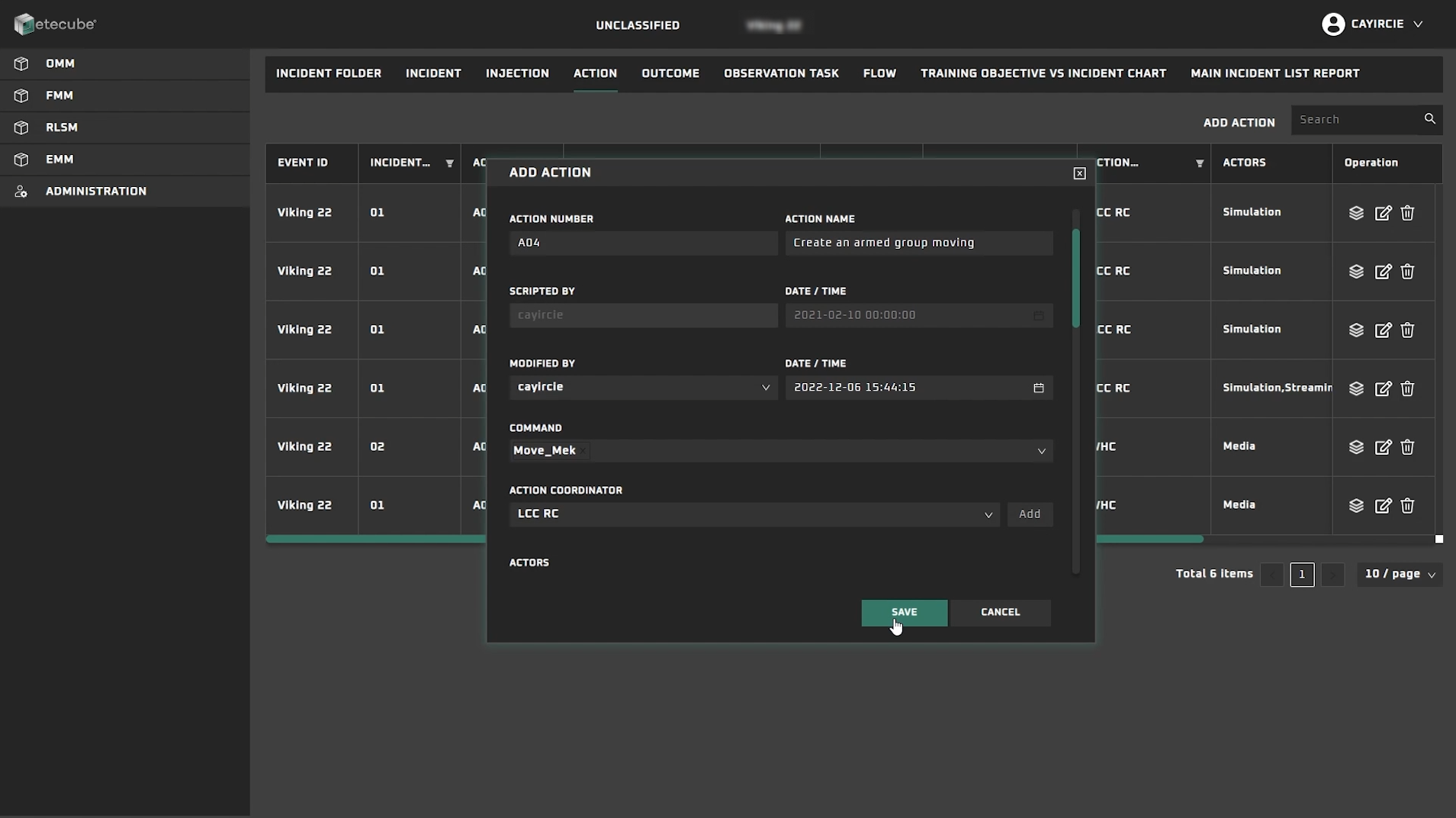

Objective Management Module (OMM)
OMM is for analyzing the scenario and main incident list (MIL) conditions, key processes and targeted key functional areas for each training and experimentation objective. OMM provides the collaborative environment for the planners from officer scheduling exercise (OSE), officer directing exercise (ODE) and officer conducting exercise (OCE) to determine training objectives and scenario and MIL conditions to provide the required opportunities for practicing with the training objectives (TO). The training objectives are determined according to the strengths and weaknesses of training audience. Therefore, the lead person in this process is the OCE officer prime responsibility (OPR). Training/experimentation objectives should also be related to the exercise objectives given by the OSE. The training objective selection process is a structured process.
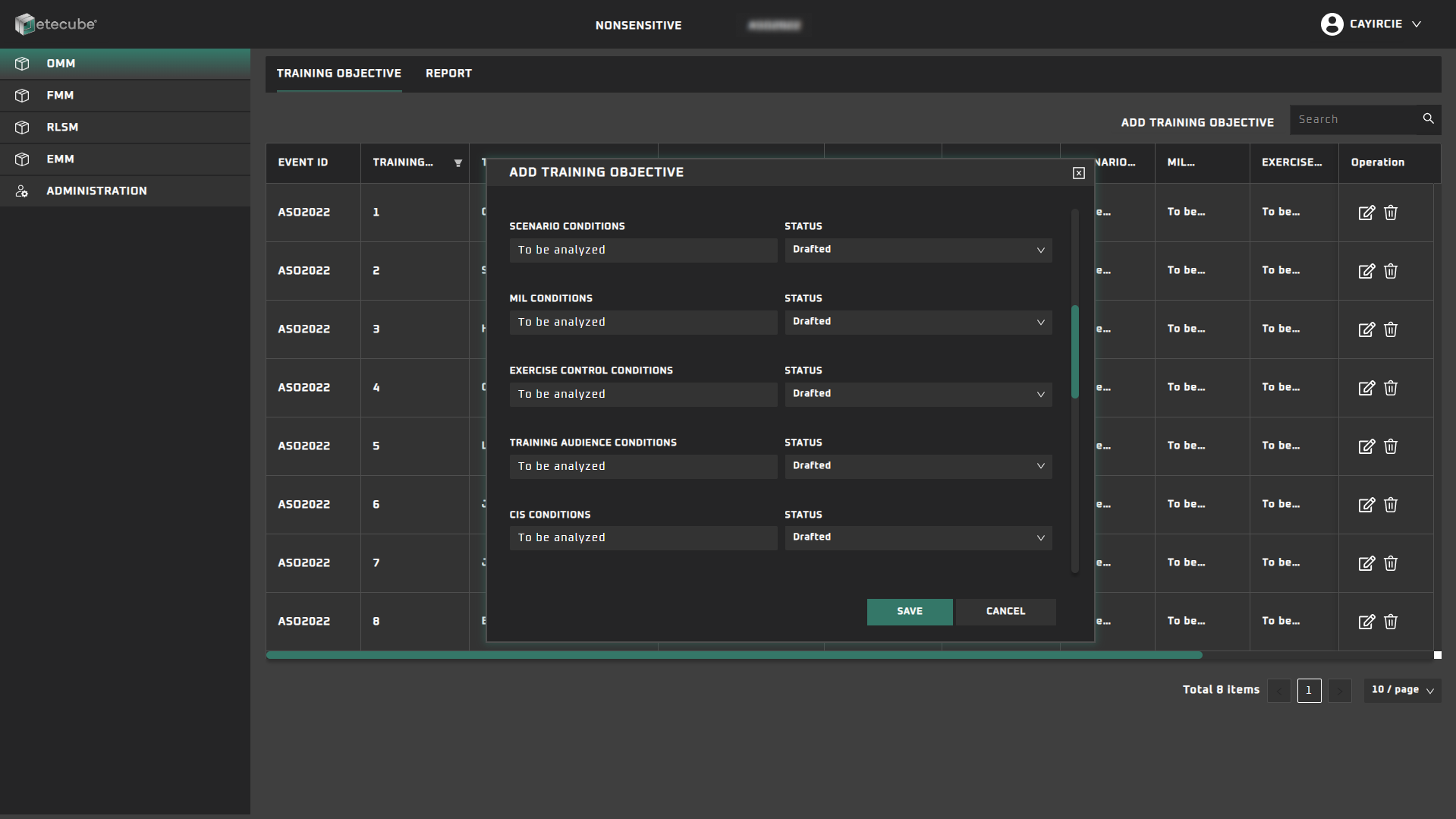
The units/headquarters aim at developing the required competencies for the tasks related to their mission. OCE selects a subset of these competencies as the training objectives after analyzing the strengths and weaknesses of the unit/headquarters and the available resources including time. Moreover, these competencies require certain collective skills, individual skills and knowledge. Collective skills become the training objectives for the collective training events, such as battle staff training, during an exercise process. Similarly, individual skills are the training objectives for the individual training, and individual knowledge is the learning objectives for the education during an exercise process. The education and training during an exercise should flow such that their outcomes (i.e., learning and training outcomes) covers the training/learning objectives. Note that a training objective is not defined only as a title and description but includes details like the parts of the training audience and key processes aimed with each objective.
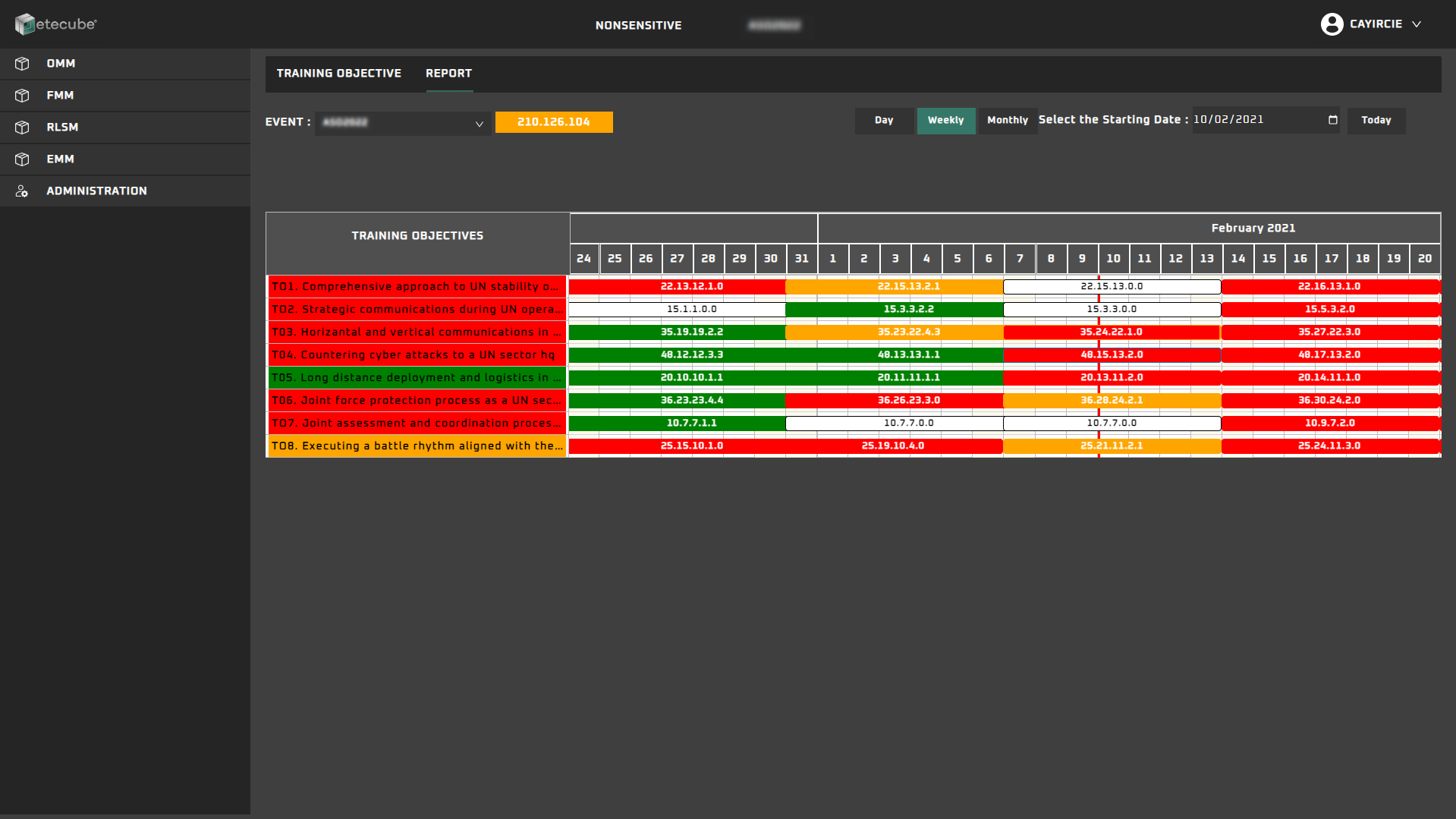
Setting/Scenario Management Module (DMM)
A scenario sets the starting point and an exercise flow that provide the conditions over which the audience of an exercise can practice with their training objectives. In other words, a scenario must contain all the data, information and knowledge
- to immerse the training audience into a rich and realistic situation,
- and to provide the conditions required to meet the training objectives.
Therefore, each exercise has its unique scenario, which can hardly be reused. Scenarios are designed from a setting which is the description of and the material related to geostrategic situation and theater of operations. Settings and scenarios can be developed and managed better when an effective collaborative environment is available. SMM provides such an environment with an extensive set of software tools and data.
Exercise scenarios are large knowledge base which include many components, such as MIL, maps, geo data, weather data, order of battle for all sides, in other words the data required to create a virtual theater. Therefore, not only FMM but also SMM is seamlessly integrated with hymots®, which can be used for building a significant portion of exercise scenarios and retrieves large datasets from SMM.
Flow Management Module (FMM)
During execution of an exercise, training audience should be given the opportunities for practicing with their training objectives. This can be achieved by controlling the flow of the exercise such that those conditions are created. Moreover, exercise control should be informed and ready when those conditions are created to analyze and assess the training audience performance in meeting their training objectives. The exercise flow needs to be dynamically managed based on the results of this assessment in order to steer the exercise towards the training objectives. This is managed by designing main even main incident lists (MEL/MIL), connecting MEL/MIL with the training objectives, connecting the observation tasks and training outcome analysis with MEL/MIL and synchronizing the virtual theater (i.e., simulation) with the MEL/MIL. Please note that a constructive simulation system typically maintains the virtual theater. FMM provides the collaborative working environment for building a MEL/MIL, managing it according to training outcomes, and synchronizing it with the simulation systems.
FMM analyzes the observations entered by the observers and trainers and depicts autonomously how well the training objectives are met. Observers, trainers and response cells enter their observations to the system according to the observation tasking made through FMM. For this, at least one incident is designed for each training objective. An incident is something that the training audience need to act on when it happens. These responses to the incidents by the training audience are the training outcomes of the incident and directly related to the training objectives. They may stay inside training audience (planning, coordination, reports, orders, etc.) or send by the training audience to higher level (HICON) or lower level (LOCON) in the form of orders, reports, request for clarification/information/coordination. The training audience are made aware of the incident either by injections (i.e., reports and orders by HICON, LOCON, white cell, media simulation) or by changing the operational picture through simulation (i.e., actions).
FMM includes tools to monitor and manage the content and status of every construct in MEL/MIL, such as injections, actions and outcomes.
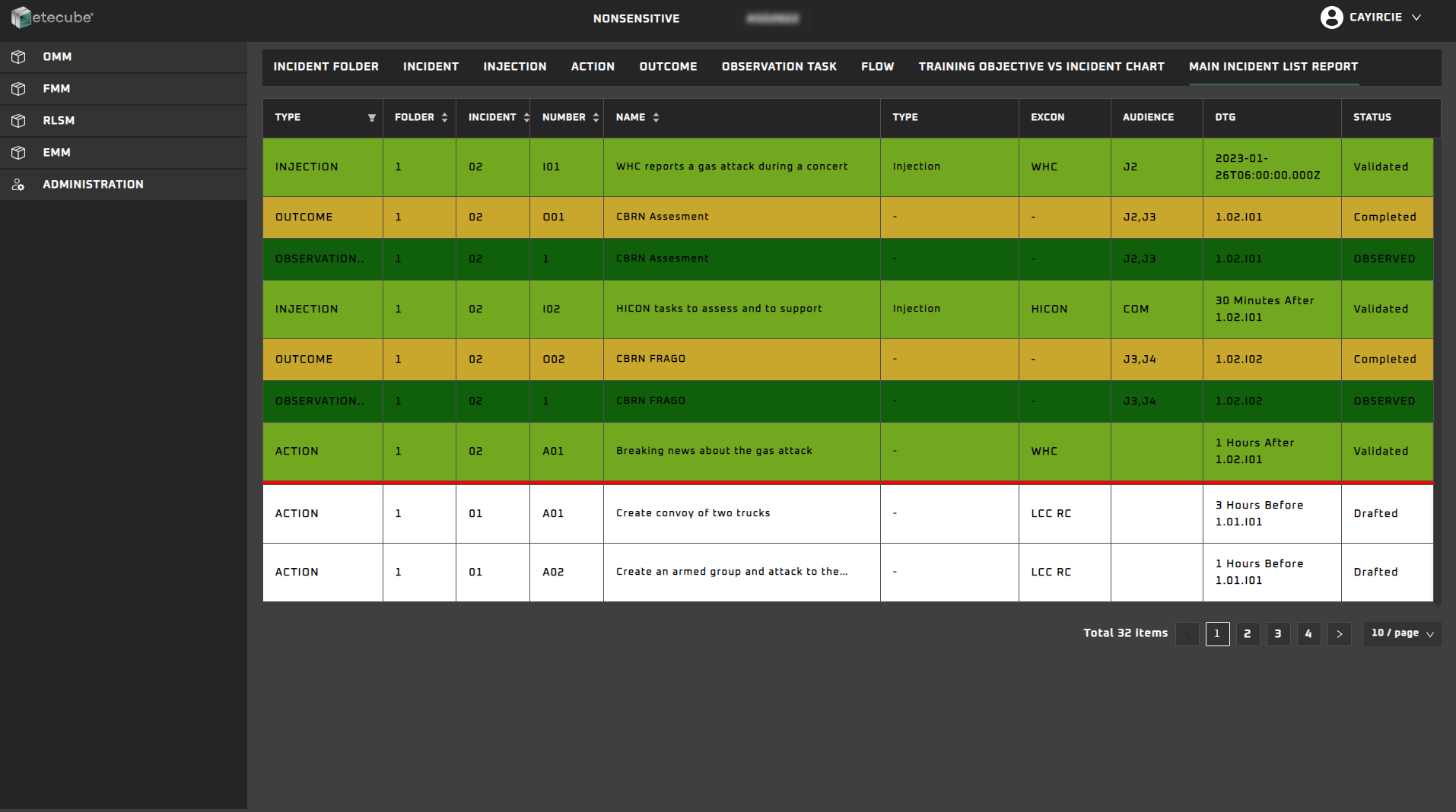
FMM provides exercise control staff (EXCON) with a common operating picture (COP) for EXCON. Although EXCON COP is dynamic and can be changed, the default configuration illustrates the following:
- injection/action status list
- training objective status
- incident structure
- common operational picture as perceived by the selected training audience
- common operational picture as the ground truth with the details of the selected incidents
- EXCON Battle Rhythm.
EXCON COP can be configured dynamically, and various filters can be applied in each screen.

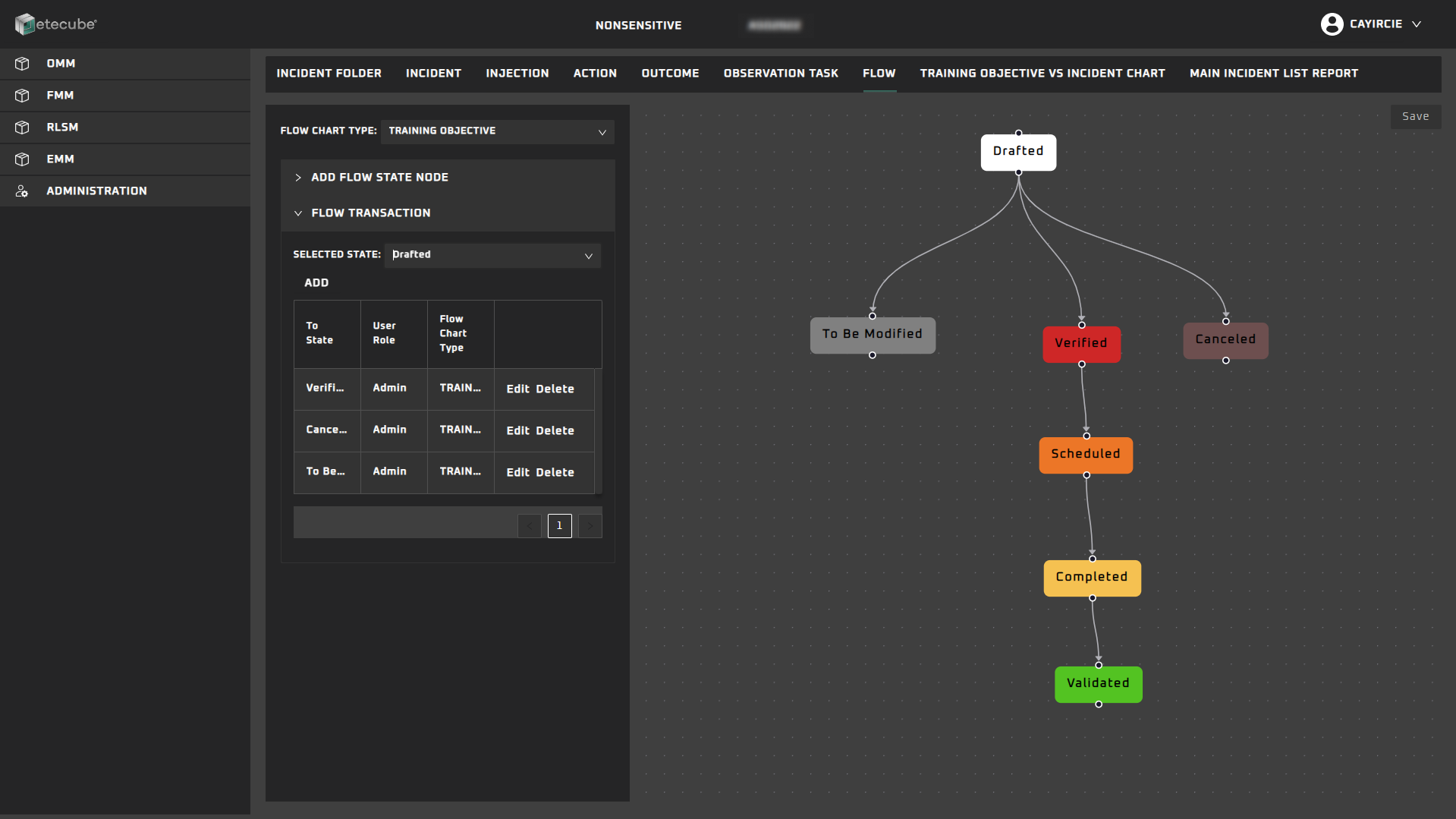
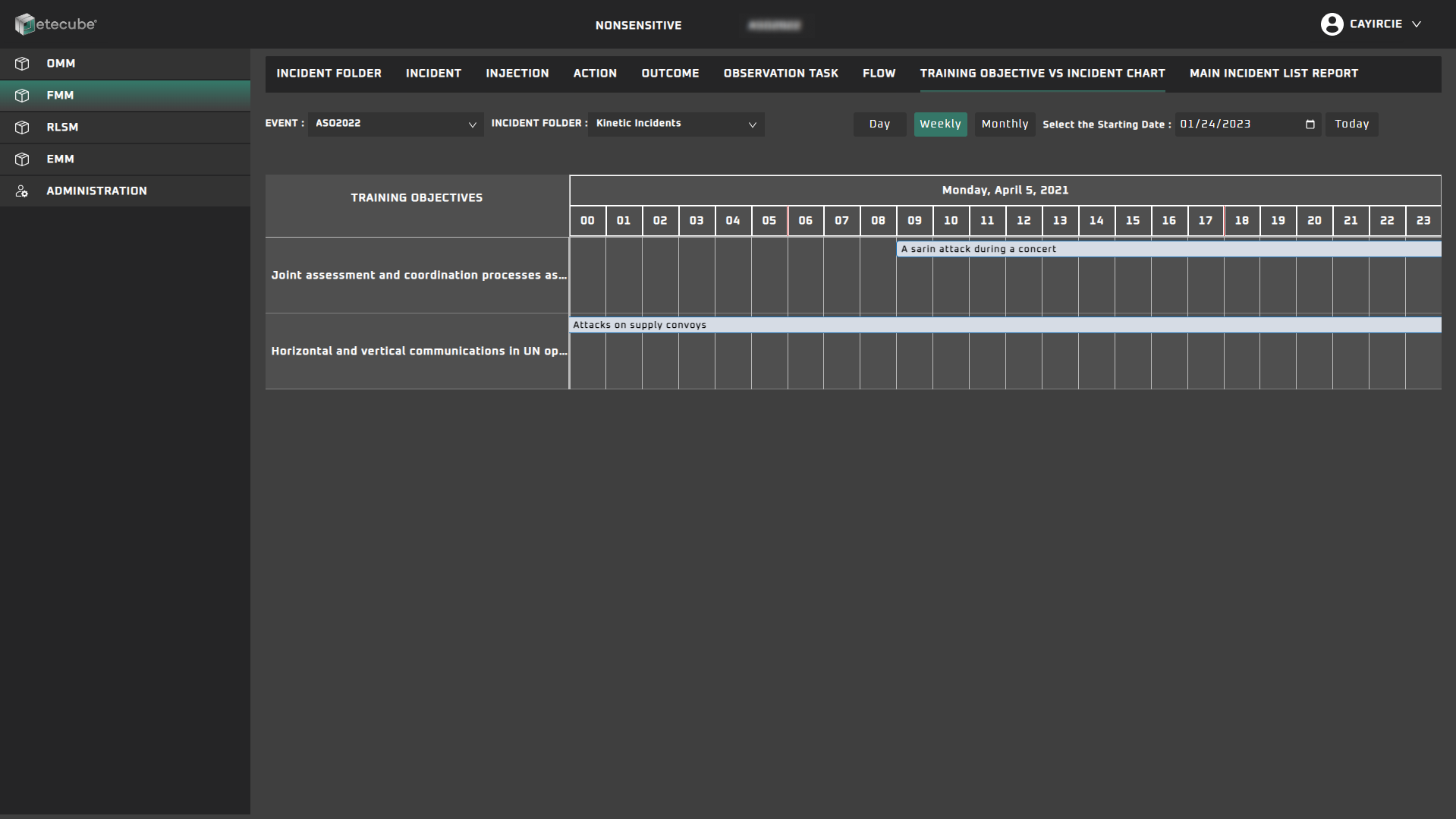
Experiment Management Module (EMM)
EMM is for designing experiments according to experimentation objectives and steering an experiment towards its objectives. EMM is a variation of FMM and OMM adapted for military experimentation. It provides a collaborative environment to choose dependent (measures) and independent (factoring) parameters according to the experiment objectives, develop hypothesis, design experimentation configurations (i.e., value sets for the independent parameters), to collect and analyze experiment results.
EMM is also used for designing experiments and collecting data from experiments. When dependent (measures) and independent (factoring) parameters are picked according to the experimentation objectives, the experimentation configurations (i.e., value sets for the independent parameters) are determined with the help of EMM which also collects and analyzes experiment results. It supports all kinds of military experimentation including discovery, hypothesis, validation and demonstration experiments.
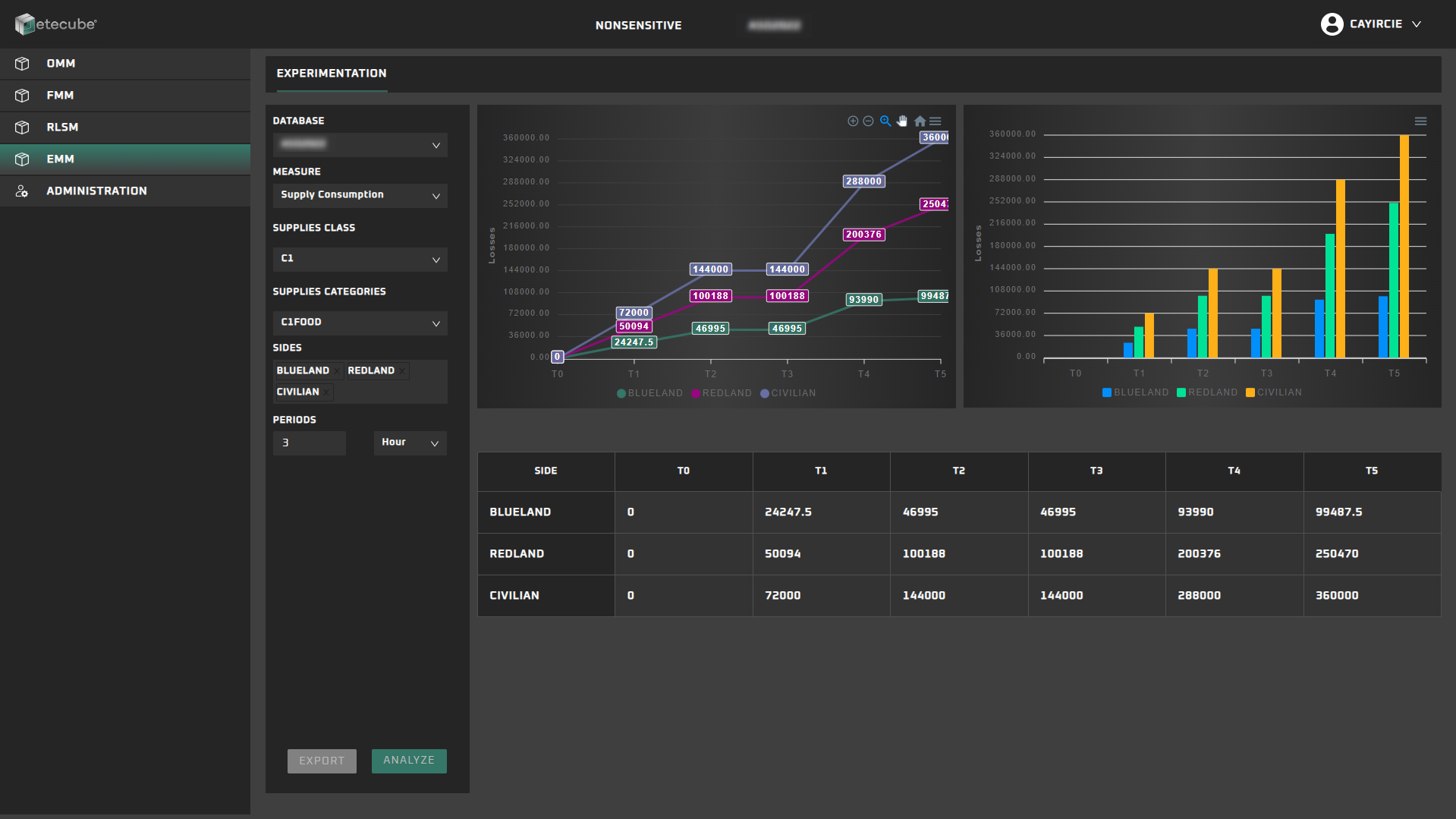
Lessons Identified and Lessons Learned Module (LILL)
LILL records observations and appropriations, and support LILL analysts to verify, manage and validate lessons. LILL is designed for collecting and analyzing the lessons from the actions of TA and EXCON. Any exercise/experiment participant can make an observation which are grouped according to a set of predefined categories. The appropriators of the categories write comments on the observations. An analyst analyzes the observations and the comments. When an observation is verified by an analyst after this process, it becomes an identified lesson.
All the actions taken on the lessons and their results are recorded in the system. Once an analyst validates that the actions to correct a lesson meets the objective, the status of the lesson is changed as a lesson learned. Lessons learned are not removed from the database and reminded to the related staff members and teams periodically.
The lessons identified and lessons learned can be published to the other entities when the analyst recommends, and the owner of the lesson approves.
Real Life Support Module (RLSM)
RLSM is for managing the configuration change requests and trouble tickets. RLSM is used for planning and managing all sort of real life support issues including transportation, security, accommodation, catering, in-processing and out-processing. Major functions of RLSM include but not limited to the following:
- CIS configuration change request management
- CIS trouble ticket management
- RLS service request management
- RLS trouble ticket management
- Cyber security incident reporting and first response
- Physical security incident reporting and first response
- Personal administration form (PAF) management
Please click here to see the etecube® booklet.
